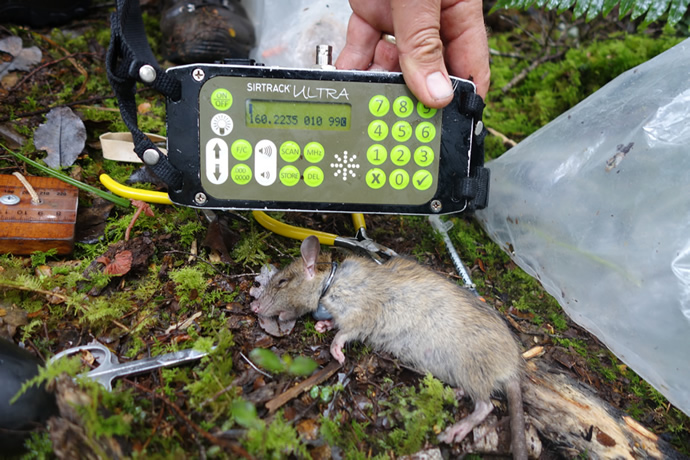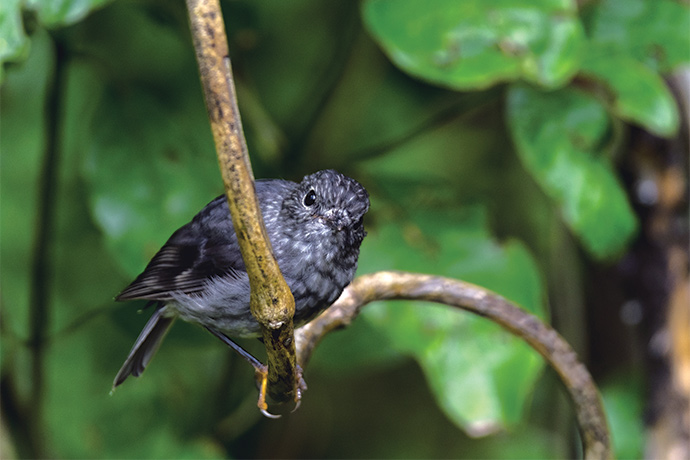The underpinning product of the research is a much-improved model for bird management in different forest types. Previous kiwi experience has provided the foundation for this model. Population outcomes for kiwi were forecast through mast events and management operations specifically in Fiordland beech forests.
Some 20–30 years of research into tree flowering and seeding and spikes in predator numbers have given us good predictive tools to manage bird/ predator dynamics in cold beech forests. This new research programme, ‘More Birds in the Bush’, aims to improve the ability to forecast predator threats and bird responses across all New Zealand’s forest types, and thereby improve our partners’ effectiveness and efficiency in forest management nationwide. It’s led by Manaaki Whenua scientists Drs Susan Walker and Adrian Monks, with Dr Gretchen Brownstein as programme manager.
Now some 18 months old, More Birds in the Bush already has significant momentum, helped considerably by research partners in large-scale predator control who have shared rodent-tracking, management and bird count data to inform the programme’s forecasts. ‘The More Birds research team has overcome significant challenges to rapidly scale up our science programme, facilitated greatly by the readiness and flexibility of our partners, especially the Department of Conservation, to lend their operations and monitoring,’ says Dr Monks. Several research strands will all contribute to an improved model that partners will use for better management outcomes. An overview of the contributing strands follows.

A rat fitted with a radio collar in Lake Alabaster, Fiordland
Ship rat dynamics and bird outcomes
To identify what drives rat dynamics, we are measuring the composition and structure of native forests at long-term predator tracking tunnel sites across New Zealand. Bird occupancy is also being measured with acoustic recorders at the same sites to characterise bird outcomes givenlong-term rodent dynamics and other forest attributes. We have developed an enduring field method, which is now being rolled out in warmer northern forests.
Forest phenology
Understanding how forest flowering and fruiting seasons change with elevation will give us a fine-scale knowledge of forest resources, improving our ability both to forecast when and where ship rat populations and birds will thrive and to target appropriate predator control interventions.
Ship rat movements and mechanisms at Lake Alabaster in Fiordland
This research is on underlying rat population dynamics throughout a mast seeding cycle. The study will shine light on many aspects of ship rat biology, but we are asking two key questions:
Are rats more limited by cold or food? If rats turn out to be more temperature-limited than food-limited, a warming climate could have worrying flow-on effects for rat numbers in New Zealand.
What causes rapid ‘bounce back’ of rat populations following landscape scale poison operations? Insights into how rats increase in the months and years after aerial control with baits will enable better-informed future control operations that result in improved survival of nesting native birds and other fauna.
Where and when will predator management most benefit native forest birds?
We have built a bird demography database, interviewed expert ornithologists, and are conducting a field study at Mt Pirongia, to better understand how food resources and predation interact in New Zealand forests and the resulting outcomes for bird populations. Study species at Mt Pirongia are tītipounamu/rifleman, miromiro/tomtit, and korimako/ makomako/koparapara bellbird.

A New Zealand bush robin or toutouwai perches on a branch in Bushy Park in Whanganui, New Zealand
Re-establishing bird populations in large forests
Dispersal of birds to unmanaged areas may hinder successful reintroductions to large mainland forests (due to predation). We are studying dispersal patterns of reintroduced birds in large forests to understand how big managed forest areas need to be, alongside community, council, and iwi partners.
Novel drone technology is being compared against standard techniques for post-release monitoring to see if we can get higher quality data for less time and money, working with with Dr Chris Muller at Massey University.
Iwi management of bird recovery
Researchers have started working with the Tūhoe Tuawhenua Trust, based at Ruatāhuna, towards their goal of kererū recovery in their forests. Over the winter, we reviewed the western science on kererū ecology for the Trust, to place this alongside their mātauranga as a basis for joint forest management trials. New work aims to understand both the contribution of rats and possums singly and in combination on forest fruit availability, and to understand environmental drivers of crop size and fruit characteristics in tawa.
